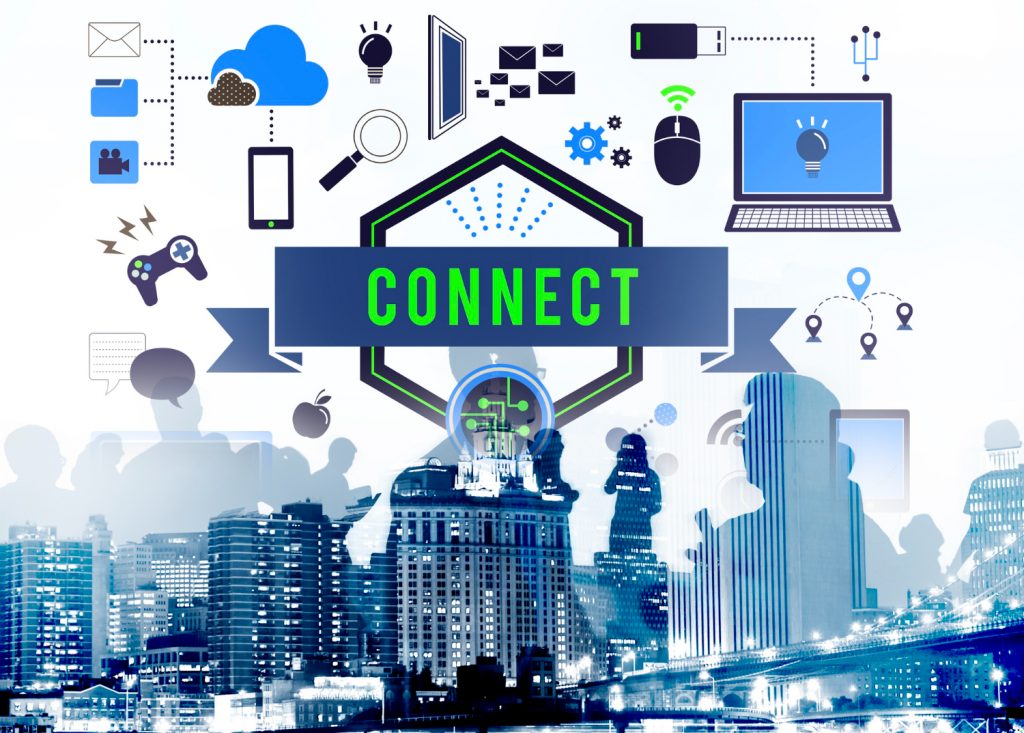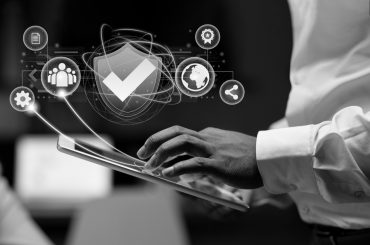The tech world never sleeps and as we race towards 2024, buckle up and get ready for another wild ride. From groundbreaking AI innovations to immersive metaverse experiences, the future is packed with mind-blowing possibilities waiting to be explored.
Imagine a world where robots become your trusty sidekicks, automating mundane tasks while you focus on what truly matters. Envision hyperconnectivity, where everything seamlessly interacts, creating a smarter, more efficient landscape.
This blog is your personal guide to the exciting tech trends shaping 2024. We’ll unravel the mysteries of these innovations, explore their potential impact, and empower you to navigate the ever-evolving tech landscape with confidence.
Whether you’re a tech-savvy individual, a business leader, or simply intrigued by what the future holds, this journey will be both informative and eye-opening. So, fasten your seatbelts and prepare to be amazed as we unveil the top tech trends that will define 2024!
Generative AI:
When generative AI landed on the scene in late 2022, it did so with a bang. This captivating technology ignited public fascination unlike anything before, and its adoption skyrocketed with unprecedented speed. Within just 60 days, OpenAI’s ChatGPT boasted 100 million users, leaving TikTok in the dust (it took them 9 months to reach that mark). The love doesn’t stop there – Midjourney’s image generator boasted 16 million users, while Dall-E 2 welcomed 1.5 million daily users. Even Google’s Bard chatbot, a new kid on the block, garnered 10 million page views in July 2023 alone.

Generative AI’s popularity isn’t limited to individuals; it’s taking the business world by storm as well. Deloitte’s 2023 CEO Priorities Survey revealed a remarkable increase in generative AI adoption within companies, showcasing its undeniable impact on both individual users and organizations. But what can you expect from it in 2024?
- Evolutionary Integration: Enterprises will adopt an evolutionary approach, leveraging existing data analytics and machine learning capabilities to seamlessly integrate generative AI into their systems.
- Infrastructure Accessibility: Accessing generative AI capabilities will become more feasible as businesses utilize service-oriented models, integrating the tech through application programming interfaces (APIs) without the need for extensive new infrastructure.
- Data-driven Efficiency: Businesses will ensure their data is architected for optimal use by generative AI, learning from examples like Enbridge’s centralized data marketplace that became a powerful asset for AI-driven efficiencies
- Sector-specific Models: The emergence of sector-specific Large Language Models (LLMs) will empower businesses, with tools like NVIDIA’s BioNeMo for biotech and Google’s Contact Center AI for customer service.
- Generative AI is making waves in the world of art and music. Musicians, artists, and other creative minds are using this technology to come up with entirely new and innovative works. As we move into 2024 and beyond, you can expect even more groundbreaking creations thanks to generative AI. For instance, artists like Refik Anadol are using generative AI to craft immersive data sculptures, while musicians like Grimes are using it to produce unique soundscapes for their music.
Want to scale your business with Generative AI? Download our free guide here
Industrial Metaverse and Web3.0:
The metaverse market is on an upward trajectory, projected to soar to nearly $700 billion in the next seven years, indicating a staggering 14x Compound Annual Growth Rate (CAGR) from 2022 to 2030. (Via Business wire)
As we navigate the metaverse landscape, opinions among technology experts diverge on its functionality and adoption pace. A noteworthy Pew Research Center survey reveals that 54% of tech experts envision the metaverse delivering immersive experiences by 2040.

The Spatial Web, also known as Web 3.0, has ushered in a new era by seamlessly merging digital content with the physical world. Smart glasses are at the forefront, promising real-time 3D (RT3D) interactions enriched with features like computer vision and biometric commands. Deloitte’s projection for the spatial computing market is nothing short of groundbreaking, with estimates soaring beyond US$600 billion by 2032.
Key Benefits of Extended Reality (XR) for Businesses:
- Increased Monitoring: XR empowers employees with monitoring capabilities, allowing them to oversee multiple spaces simultaneously. Solutions like Nokia’s eXtended Reality Multimedia provide 360-degree views and spatial audio for enhanced preemptive maintenance, security, and quality control.
- Reduced Onboard Time: Employees can acquire crucial vocational skills efficiently through simulations and visual cues, reducing the time needed for onboarding.
- Minimized Safety Risks: XR forecasts potential issues before critical procedures, especially in healthcare where 3D models are utilized for surgical planning, resulting in improved accuracy.
- Enhanced Product Development: XR proves instrumental in boosting retail revenues by swiftly converting catalogs into RT3D assets through AR virtual try-ons and generative AI tools.
The Apple Vision Pro has played a pivotal role in bringing “spatial computing” into the mainstream. Notable terms in this transformative space include 6G, the Internet of Things (IoT), human augmentation, and brain-computer interfacing (BCI).
Cybersecurity:
Until recently, artificial intelligence (AI) played a relatively minor role in the world of cybersecurity. While its potential was recognized, its practical implementation remained limited. However, 2024 is set to witness a dramatic shift, with AI taking center stage and fundamentally altering the landscape of cyber defense and attack.

As per Google’s Cybersecurity Forecast 2024 This transformation is driven by several key factors:
Rapidly evolving AI technology: Advancements in AI, particularly in large language models (LLMs) and generative AI, are providing attackers with powerful tools for crafting sophisticated social engineering campaigns, creating deepfakes, and automating attacks. But there are AI-powered detection systems that can analyze text, audio, and video for subtle signs of manipulation, identifying deepfakes and other forms of AI-driven fraud before they cause damage.
Democratization of AI tools: The availability of AI-powered services through underground forums and other online channels puts potent offensive capabilities within reach of even less skilled adversaries, lowering the barrier to entry for cybercrime. As stated in a 2023 article by Forbes, AI-as-a-service offerings are making it easier than ever for less skilled cybercriminals to launch sophisticated attacks. While this is the case, AI-powered threat intelligence platforms can track and analyze the underground market for AI-powered tools and services, helping defenders stay ahead of the evolving threat landscape.
Growing complexity of threats: The ever-evolving tech world, cyber threat landscape demands increasingly sophisticated defense mechanisms. With its ability to analyze vast amounts of data and detect subtle patterns, AI is uniquely positioned to address this challenge. An example of this is IBM’s X-Force Command, which uses AI to identify and respond to security incidents in real-time
These factors combine to create a scenario where AI will play a dominant role in both offensive and defensive strategies in 2024. While this raises concerns about the potential for devastating cyberattacks, it also presents an opportunity for organizations to leverage AI to enhance their security posture.
Hyperconnectivity and the Internet of Things (IoT):
2024 will see an explosion of connected devices, ushering in an era of hyperconnectivity where the Internet of Things (IoT) plays a pivotal role. This interconnected web of devices promises to revolutionize the way we live, work, and interact with the world around us.
What is hyperconnectivity?
Hyperconnectivity refers to a state where everything is interconnected through the internet, creating a vast network of devices and services that can communicate and exchange data in real-time. This interconnectedness is driven by several key factors, including:
Proliferation of smart devices: The number of connected devices is growing exponentially, with estimates exceeding 29 billion by 2030 (Statista, 2023). These devices range from smartphones and home appliances to industrial machinery and wearable sensors, all contributing to the ever-expanding network of connected things.
Advancements in wireless technologies: Technologies like 5G and beyond (6G and beyond) are enabling faster, more reliable, and pervasive connectivity, paving the way for large-scale deployment of IoT devices and applications.

Impact of Hyperconnectivity and IoT:
The convergence of hyperconnectivity and IoT will have a profound impact on various aspects of our lives, including:
- Smart cities: Cities will become more efficient and sustainable through interconnected infrastructure, traffic management systems, smart buildings, and environmental monitoring.
- Connected healthcare: Remote patient monitoring, telehealth services, and personalized medicine will be facilitated by connected devices and data analysis, improving healthcare accessibility and outcomes.
- Industrial automation: Factories and other industrial environments will become more efficient and productive by using interconnected sensors, robots, and AI-powered systems.
- Enhanced customer experience: Businesses will be able to personalize products and services, provide real-time support, and gain valuable customer insights through data collected from connected devices.
2024 will be a pivotal year for hyperconnectivity and IoT. As technology evolves and challenges are overcome, we can anticipate a future where everything is connected, transforming our lives in ways unimaginable today.
Upskilling and Forging New Partnerships:
The ever-evolving technological world demands continuous learning and adaptation. In 2024 and beyond, success will hinge on upskilling and forging new partnerships, two crucial strategies for navigating the dynamic world of technology.

Upskilling:
The changing nature of work: Automation and AI are transforming traditional jobs, requiring individuals to develop new skills and adapt to emerging technologies. A 2023 World Economic Forum report predicts that 50% of all employees will need reskilling by 2025 (World Economic Forum, 2023).
Continuous learning: Upskilling is not a one-time event, but a continuous process of acquiring new knowledge and skills to remain relevant and competitive in the workforce. This requires individuals to be proactive in seeking opportunities for learning, including online courses, workshops, and self-directed learning initiatives.
Emerging skillsets: In-demand skills for the future include critical thinking, problem-solving, adaptability, digital literacy, and technical skills specific to emerging technologies such as AI, data analytics, and cybersecurity.
Forging New Partnerships:
Cross-industry collaboration: Partnerships across different industries can foster creative solutions and unlock new opportunities. For example, collaboration between healthcare and technology companies can lead to the development of innovative medical devices and healthcare applications.
Leveraging diversity: Partnerships that bring together diverse perspectives and expertise can lead to more inclusive and equitable solutions, reflecting the needs of a globalized society.
This is where we can help you. At Deqode, we facilitate partnerships that bring together diverse perspectives and expertise, fostering inclusive and equitable solutions. We help companies build diverse teams, leverage global talent, and scale with agility.
Conclusion:
The year 2024 promises to be a transformative one tech wise. marked by the rise of groundbreaking technologies like Generative AI, the Industrial Metaverse, and hyperconnectivity. These advancements will usher in a new era of automation, efficiency, and innovation, but also raise new challenges and opportunities.
As individuals and organizations navigate this dynamic landscape, continuous learning and collaboration will be key to success. Deqode’s IT Consulting services are designed to empower you on this journey.
Whether you’re looking to explore the potential of Generative AI, build your presence in the Industrial Metaverse, or secure your infrastructure in the hyperconnected world, Deqode is your trusted partner. Contact us today to discuss how we can help you leverage the power of new technologies and stay ahead of the curve.
Explore our portfolio and learn more about our services at here.





